The Things We Do for Friends: The Film ‘Devotion’ Tells the True Story of Jesse L. Brown and Tom Hudner
The incredible true story of Jesse L. Brown, the first African-American aviator to complete the Navy’s basic flight training program, and the comradeship between him and fellow naval aviator Thomas Hudner, is coming to the big screen in October 2022. Devotion is set to deliver adrenaline-pumping air combat sequences and heroic acts of bravery against the tragic backdrop of the Korean War – but will it do their story of friendship and sacrifice justice?
The true story of Jesse Brown and an act of heroism
Devotion follows the true story of African-American Navy pilot Jesse L. Brown during the Korean War, which many believe is America’s “forgotten war.” Brown struggled to navigate the challenges of being a Black man in a segregated military, but ultimately became an inspiration to other African-American servicemen and aviators.
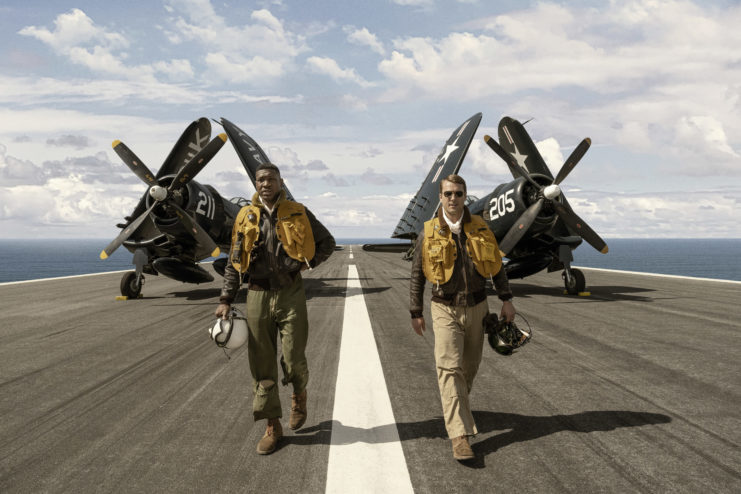
After flying over 20 successful combat missions, Brown crashed his C4U Corsair on a mountaintop during the Battle of Chosin Reservoir. In an effort to save his friend and fellow pilot, Brown’s wingman Thomas J. Hudner Jr. intentionally crashed his own plane. Brown became trapped in the wreck of his aircraft, and despite Hudner’s attempts to wrestle him free from the wreckage, Brown succumbed to his injuries. He was just 24 years old.
An African American aviation pioneer
Jesse LeRoy Brown was born in 1926 in Hattiesburg, Mississippi. One of five siblings, Brown and his family lived in a small house without indoor plumbing or heating. When Jesse was six years old his father took him to an airshow. Brown became infatuated with the idea of flying, a life-long dream that would soon become reality.
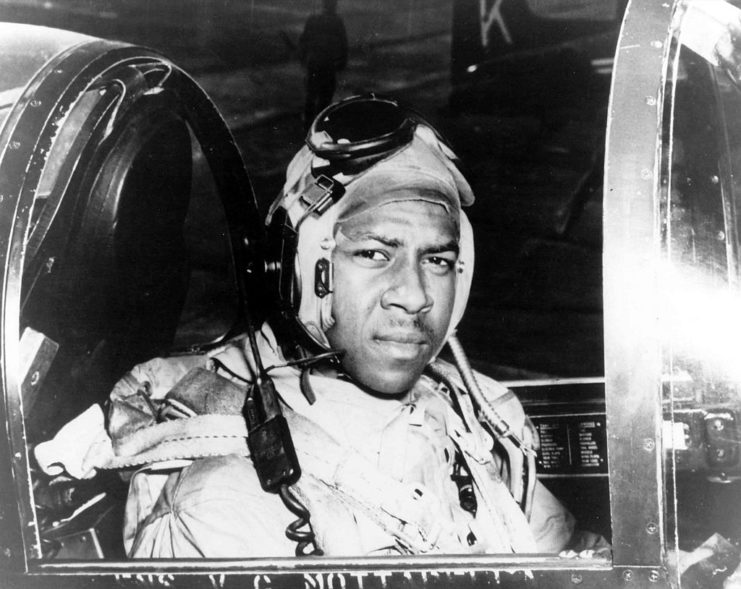
Brown was intensely aware of the racist structures of segregation that limited him from pursuing his dream. In 1937 young Brown wrote a letter to President Franklin D. Roosevelt questioning the injustice of African-American pilots being kept out of the U.S. Army Air Corps.
While attending a segregated high school, Brown became a popular student. He was very talented in both academics and athletics, and while in high school he also fell in love with his future wife, Daisy. Brown wanted to pursue a college degree outside of the south in a non-segregated school, so he enrolled in Ohio State University – just like his role model (and namesake) Jesse Owens.
Challenging segregation in the Navy
Even though he majored in architectural engineering, Brown longed to join Ohio State’s aviation program. Each application was denied because of his race. The following year, Brown discovered the U.S. Navy had created the V-5 Aviation Cadet Training Program for colleges to train and recruit future pilots.
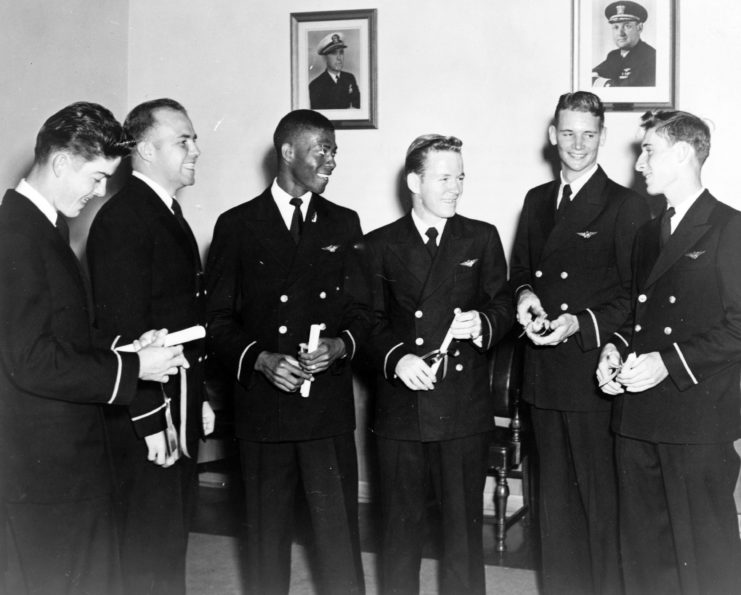
Of the 52 colleges that offered the program, none of them were historically made up of a black student population – alienating African-American students from attending. Regardless of the racial barriers that stood in his way, Brown passed his entrance exams and enrolled in the program.
In July 1946, Brown enlisted in the U.S. Naval Reserve and became a member of the Naval Reserve Officer Training Corps, specializing in aviation. At the time, Brown was one of 14 Black students enlisted in the Training Corps program comprised of over 5,000 students.
Service in Korean War and crash
Brown completed his military training and joined the U.S. Navy in 1949. Not long after, the North Korean People’s Army began an invasion of South Korea, prompting the United States to come to South Korea’s aid. In October 1950, Brown was stationed aboard an aircraft carrier in the Mediterranean Sea that was called to Korea. Brown and other pilots in his unit were tasked with providing air support while American troops fended off Chinese soldiers surrounding the Chosin Reservoir.
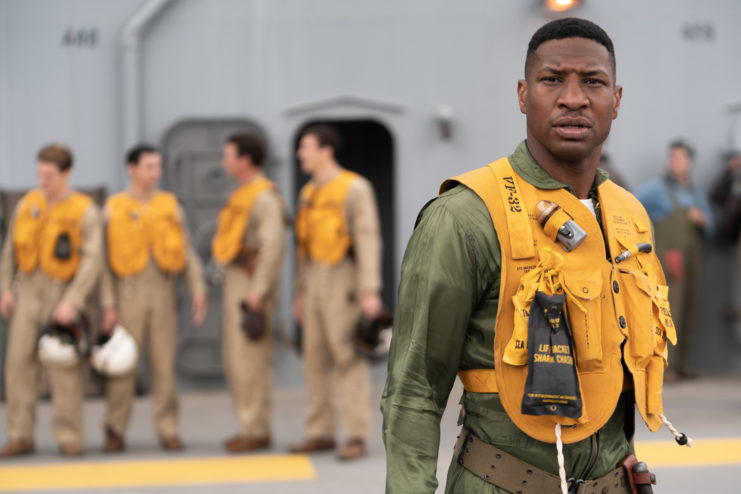
On December 4, 1950, a bullet ruptured the fuel line in Brown’s aircraft. Brown tried to make an emergency landing on the snowy side of a mountain but crashed into a nearby valley instead. His leg became pinned underneath the fuselage, blocking any chance of escape from the fiery wreck.
His wingman, Lieutenant Junior Grade Thomas J. Hudner Jr. was circling overhead when he saw Brown wave his hands from his crashed plane. Any attempt at saving his fellow pilot came with great risk. The mountains surrounding the area were already 15 miles behind Chinese enemy lines.

Radio operators said a rescue helicopter was on its way, but time was already running short. The fire from the crash was growing closer and closer to the aircraft’s fuel tank, which could explode at any moment. Hudner could see the imminent risk to Brown’s life and landed his plane nearby.
Hudner sacrificed his safety to save his friend
Hudner ran to Brown’s side and tried to free him from the wreckage, but Brown’s injuries were quickly overtaking him. Soon after the rescue helicopter arrived, Hudner and the rescue crew extinguished the fire and spent the next 45 minutes trying to free Brown using an ax.
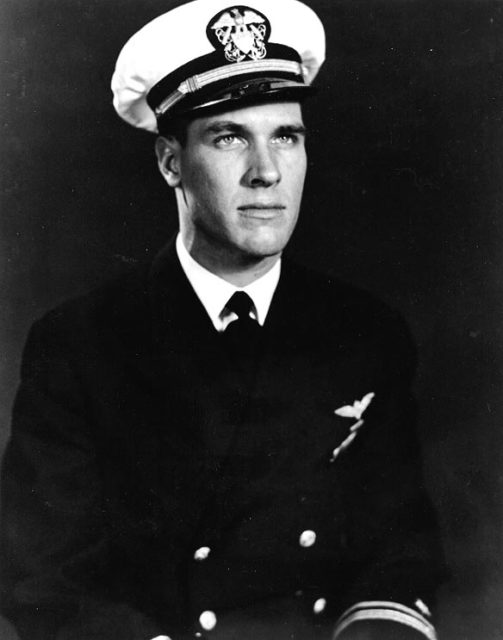
It was clear that freeing Brown wouldn’t be that easy. As the minutes went by Brown’s condition worsened, and soon the helicopter was forced to leave Brown alone to return to base before nightfall. Brown died that night, likely due to the extreme cold and the injuries he sustained in the crash.
Hudner remembered Brown’s last words: “Tell Daisy I love her.” Hudner pleaded with officials to allow him to return to the site and rescue Brown’s body to give him a proper burial, but his request was denied due to the heavy presence of Chinese gunmen in the area.

To prevent the Chinese from seizing Brown’s body, the U.S. Navy bombed the site with napalm while reciting the Lord’s Prayer over their radios. Brown’s body was never recovered. He was the first African American to die in the Korean War.
Jesse Brown’s legacy
Jesse Brown was posthumously awarded the Distinguished Flying Medal, the Purple Heart Medal, and the Air Medal. For his selfless attempt to save his fellow serviceman, Thomas Hudner was awarded the Medal of Honor.

In 1973, the U.S. Navy commissioned the USS Jesse L. Brown. Thomas Hudner spoke at the ship’s dedication, which was also attended by Brown’s family and his wife Daisy. In 2013, Hudner asked North Korean officials if he could return to the crash site to attempt to recover his friend’s body once more, but was told to return at a later date.
Thomas J. Hudner Jr. died on November 13, 2017. His biography, Devotion: An Epic Story of Heroism, Friendship, and Sacrifice inspired the 2022 film Devotion.
Movie adaptation set to bring Brown’s story to life
Devotion is set to hit theatres on October 28, 2022. The film will star Glen Powell, who has already claimed his place amongst military movie stars for his role in Top Gun: Maverick, as Tom Hudner. Jonathan Majors, known for recent films tackling identity and race such as Da 5 Bloods and The Last Black Man in San Francisco, is in the starring role of Jesse Brown.
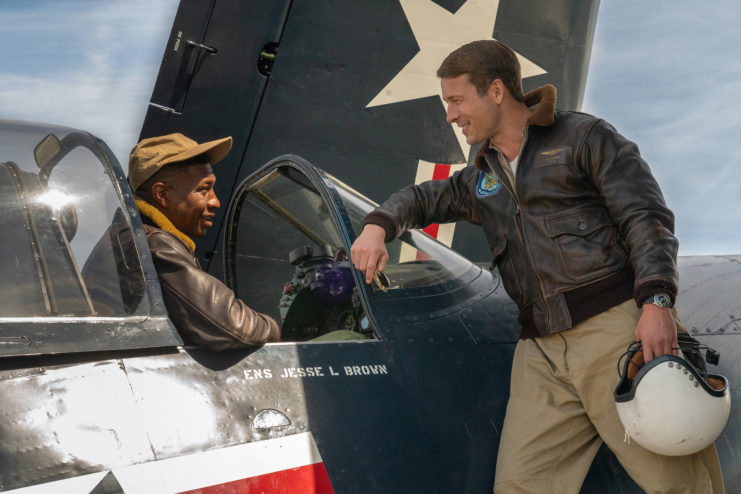
More from us: Battle for Hill 3234: The True Story Behind the ‘9th Company’ Movie
Sony Pictures recently released the official teaser trailer for the film, which will follow the friendship between Brown and Hudner as they advance through flight school and on to the Korean War while navigating their different experiences with racial segregation.
The post The Things We Do for Friends: The Film ‘Devotion’ Tells the True Story of Jesse L. Brown and Tom Hudner appeared first on warhistoryonline.
Post a Comment
0 Comments